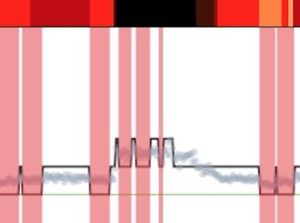Single Cell CNV Service
Analyzing copy number variation (CNV) at the single-cell level allows for cellular heterogeneity and clonal structure to be determined at high scale and resolution. Single-cell CNV analysis yields invaluable insights in multiple research areas: determining tumor heterogeneity, characterizing cell lines, revealing neuronal mosaicism, and more.
The applications of single-cell CNV are particularly useful for cancer research. Tumor heterogeneity is a major limiting factor in the efficacy of many cancer therapies. Understanding the clonal structure of tumors through single-cell CNV detection and tracking clonal evolution through tumor growth and treatment could be key for developing more effective targeted therapies.

As a pioneer in the field of single-cell analysis, SingulOmics has a highly experienced team who can lend their expertise to your project to ensure high-quality results. We utilize the cutting-edge 10x Genomics Chromium platform to provide Single-Cell CNV analysis. Profile hundreds to thousands of cells per sample and detect CNVs at 2 Mb resolution. SingulOmics offers a comprehensive solution, from amplification to sequencing to data analysis and visualization.
Service Workflow


Sample Requirements
Sample requirements for frozen cells
(1) We recommend freezing 5x10^5 to 1x10^6 cells in 1 ml of freezing media per cryotube.
(2) If the number of cells is not a limiting factor, freeze 2x10^6 cells in 1 ml of freezing media per cryotube and prepare two (2) cryotubes per sample. If you have a limited number of cells, you can still submit 1x10^5 cells in 0.5 ml of freezing media per cryotube.
(3) Use standard freezing media (e.g. cell growth media + 20% FBS + 10% DMSO; or 90% FBS + 10% DMSO) and place the samples at -80°C while slowly decreasing the temperature using any device/method to maintain an approximate -1°C/minute freeze rate.
Sample requirements for frozen tissue (for nuclei isolation)
Fresh tissue, immediate after collection, must be "snap" or "flash" frozen on dry ice or in liquid nitrogen to preserve RNA integrity. Failure to do so will affect the final quality of the isolated nuclei.
(1) If possible, smaller size tissue (approx. 100 mg) is preferred as it can be frozen faster than a larger one.
(2) One method we recommend is using Dry Ice Ethanol Bath. Always wear gloves when handling dry-ice and ethanol. Break the dry ice into smaller pieces and place them into a rubber or stainless steel container (plastic can degrade over time). Pour the ethanol solution into the container; add only enough to completely cover the dry ice. Once the boiling ethanol solution has slowed down, place your samples in.
Before submitting your samples, contact us to discuss the best approach for your particular cell type.
Next Steps...
Contact us to learn more or get a price quote.
